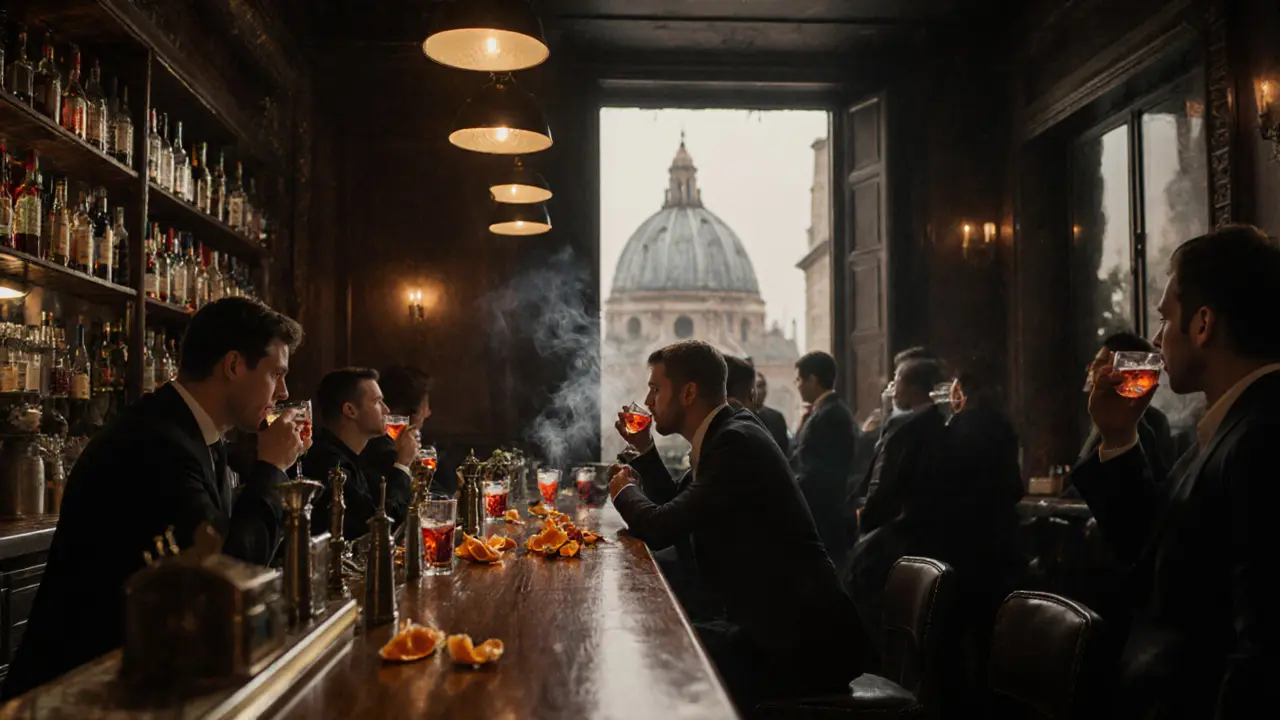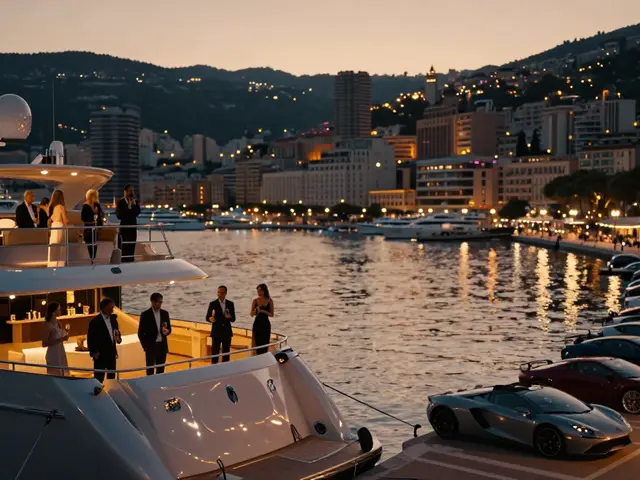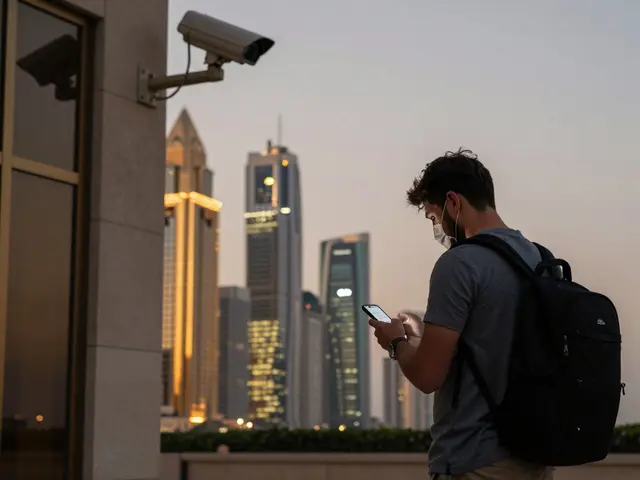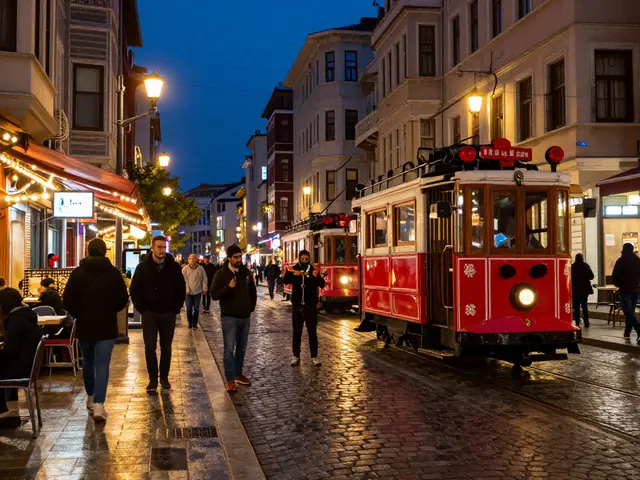Most tourists leave Milan by 8 p.m., thinking the city shuts down after dinner. But if you stick around, you’ll find a pulse that doesn’t slow down until sunrise. Milan after dark isn’t just about partying-it’s about culture, style, and secrets tucked behind unmarked doors and down cobblestone alleys. This isn’t the Milan of fashion shows and museums. This is the Milan that lives in dimly lit wine cellars, rooftop lounges with skyline views, and basement jazz spots where the music feels like it’s been played the same way since the 1970s.
Where the Locals Go (And Tourists Never Find)
If you want to avoid the tourist traps, skip Navigli’s overpriced cocktail bars with fake Italian flags and head to Bar Basso in the Porta Ticinese district. This place has been serving the Aperol Spritz since 1957, and it’s still the gold standard. The secret? They use real orange peel, not syrup. The line outside looks like a queue for a concert, but the inside is quiet, warm, and full of Milanese professionals unwinding after work. Order the Negroni Sbagliato-it was invented here-and sit at the bar. You’ll see lawyers, designers, and musicians all talking in hushed tones like they’re sharing state secrets.
For something more underground, walk 10 minutes to Circolo degli Artisti. It’s not a club. It’s not a bar. It’s a former art studio turned into a weekly experimental music and poetry night. No cover charge. No dress code. Just a room with mismatched chairs, a projector flickering old films, and a DJ spinning vinyl from the 1980s Italian underground scene. You won’t find it on Google Maps unless you know the exact address. Locals text it to each other like a password.
Where to Dance When the Clubs Are Just Getting Started
Milan’s club scene doesn’t start until 1 a.m. That’s when Bocconi opens its doors. This isn’t a flashy superclub. It’s a converted warehouse near the university, with exposed brick, concrete floors, and a sound system that makes your ribs vibrate. The crowd? Mostly students, artists, and expats who’ve been in Milan long enough to know better than to go to Pacha or Tunnel. The music is house, techno, and deep bass-no Top 40, no EDM drops. You’ll hear a track from a Milanese producer you’ve never heard of, and suddenly you’re dancing like no one’s watching. Because no one is.
For a more polished vibe, head to Lume on the 12th floor of a building near Piazza Cordusio. It’s a rooftop bar with floor-to-ceiling windows, a minimalist design, and a view of the Duomo lit up like a cathedral in a movie. The cocktails are crafted like fine art-each one comes with a small note explaining the ingredients. The crowd is older, quieter, and dressed in black. This is where Milanese CEOs go after board meetings. It’s not loud. It’s not crowded. But it’s where you’ll feel like you’ve slipped into the city’s inner circle.
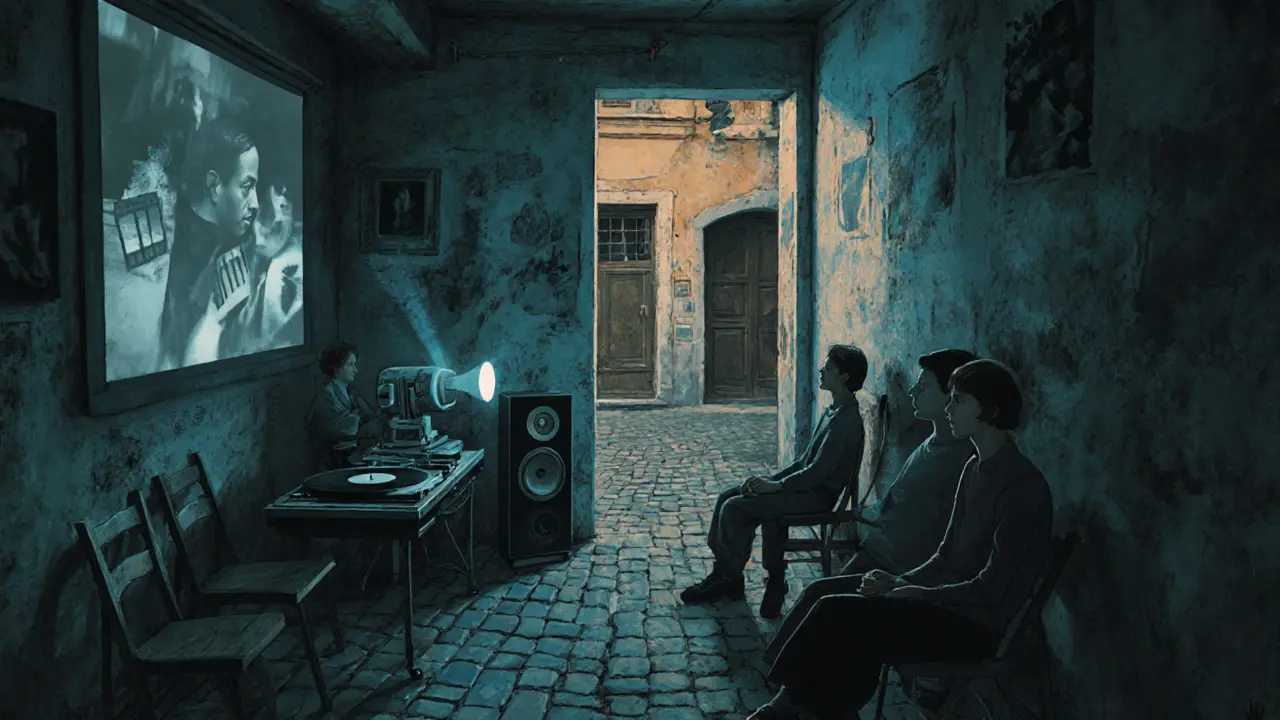
Wine Bars That Feel Like Your Friend’s Living Room
Forget the wine lists with 300 bottles. In Milan, the best wine bars have five. Vino e Vino in Brera is one of them. The owner, Luca, knows every vineyard in Piedmont and won’t let you order anything unless he’s tasted it himself. He’ll pour you a glass of Nebbiolo from a tiny family vineyard that only makes 500 bottles a year. You’ll pay €12 for it. You won’t find it anywhere else in the city. The snacks? Homemade salumi, aged cheese, and olives marinated in rosemary and wild fennel. No menu. Just ask, and he’ll bring you what’s good that night.
Down the street, La Storia feels like walking into a 1920s bookshop that turned into a wine cellar. The shelves are lined with old novels, and the wine is stored in glass bottles behind the counter. They serve only natural wines-no additives, no filtration. It’s cloudy. It’s strange. And it’s the most honest thing you’ll drink in Milan. The staff doesn’t push sales. They just hand you a glass and say, "Try this. Tell me what you think."
Midnight Snacks and Late-Night Eats
After dancing or sipping wine, you’ll be hungry. Most places shut down by midnight. But not Trattoria da Gianni. This tiny spot near the central station opens at 10 p.m. and doesn’t close until 4 a.m. It’s not fancy. No reservations. Just a counter, a few stools, and a grill that’s been smoking for 40 years. Order the panzerotti-fried dough stuffed with mozzarella and tomato-and a glass of cheap red. It’s the kind of food that tastes better at 2 a.m. than it ever could at lunch.
For something lighter, head to Gelateria della Musica. It’s not a typical gelato shop. It’s a jazz bar that serves gelato after midnight. The flavors change weekly-last month it was black sesame with candied orange, this week it’s espresso with burnt honey. The music? Live piano, no cover, no distractions. You sit, you eat, you listen. No phones. No talking. Just sound and sweetness.
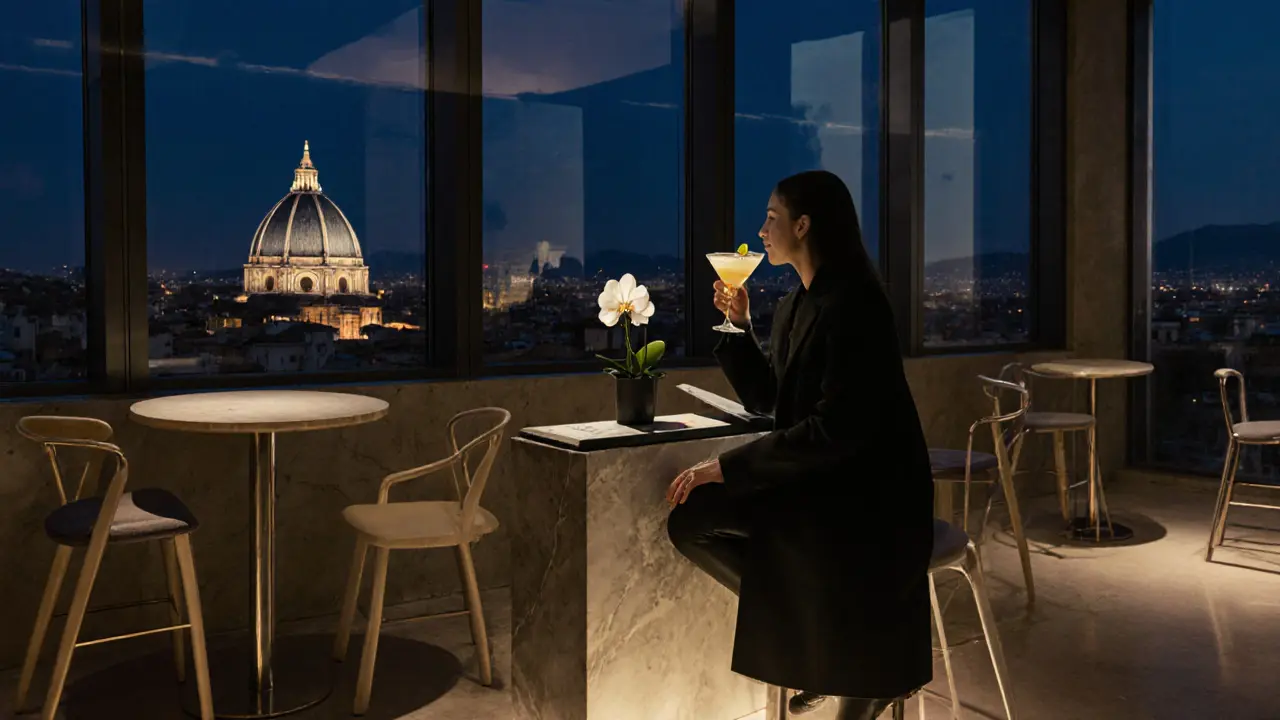
What Not to Do
Don’t go to clubs that advertise "Milan’s #1 Party Spot" on Instagram. They’re usually overpriced, overcrowded, and play the same three songs on loop. Don’t wear sneakers to a rooftop bar. Milanese nights are stylish, even when they’re casual. Think clean lines, dark colors, and one statement piece-a leather jacket, a silk scarf, a vintage watch.
Don’t expect English menus everywhere. Most places have Italian only. That’s not a barrier-it’s a filter. If you can’t read it, ask. Locals will help. They like that you care enough to try.
And don’t leave before 3 a.m. If you do, you’ll miss the best part: the sunrise over the Brera district, the quiet streets, the smell of fresh bread from the bakery opening up, and the feeling that you’ve seen a side of Milan no guidebook ever showed you.
What’s the best time to start nightlife in Milan?
Most Milanese don’t even think about going out until 11 p.m. Dinner ends late-often around 9:30 or 10 p.m.-so bars fill up after that. Clubs don’t get busy until 1 a.m., and the real energy kicks in after 2 a.m. If you show up at 9 p.m., you’ll be the only one there. Patience pays off.
Is Milan nightlife safe at night?
Yes, but like any big city, stay aware. The main nightlife districts-Navigli, Brera, Porta Ticinese, and the area around Piazza Cordusio-are well-lit and patrolled. Avoid isolated alleys after 3 a.m., and don’t carry large amounts of cash. Most places accept cards, and taxis are easy to find via apps like Free Now or Uber. Stick to busy streets, and you’ll be fine.
Do I need to dress up for Milan nightlife?
Not in every place, but yes in most. Milan is stylish. Even casual spots expect you to look put-together. Think dark jeans, a nice shirt or sweater, and clean shoes. Avoid sportswear, flip-flops, or baseball caps. You don’t need a suit, but you should look like you made an effort. It’s not about being rich-it’s about respecting the culture.
Are there any free nightlife options in Milan?
Absolutely. Many wine bars let you taste a glass for €5-€8. Jazz clubs like La Storia and Circolo degli Artisti have no cover charge. Some rooftop bars offer happy hour from 7-9 p.m. with discounted drinks. Walk through Navigli after dark-there’s live music on weekends, street performers, and open-air art stalls. You don’t need to spend money to feel the vibe.
What’s the difference between Milan and Rome nightlife?
Rome is loud, chaotic, and tourist-heavy. Milan is quiet, intentional, and local. In Rome, you’ll find crowds at the same bars every night. In Milan, you’ll discover a new hidden spot every weekend. Milan’s scene is more about atmosphere and taste than volume and spectacle. You’re not here to party-you’re here to experience.
What to Do Next
If you’re staying for more than a few days, pick one spot each night and explore it deeply. Don’t try to hit five clubs. One great bar, one late-night snack, one hidden jazz set-that’s enough. Talk to the bartenders. Ask them where they go on their days off. They’ll point you to places you’d never find on your own.
And if you’re leaving before sunrise? Don’t. Stay. Watch the sky turn from black to gray, then to pale gold. Walk back to your hotel through empty streets. You’ll realize Milan doesn’t sleep-it just waits for you to notice it.
